Thinking of staying at a ryokan when you visit Japan? We’re so excited for you to learn all about this traditional hotel! Not only do ryokans have gorgeous traditional architecture, but they also fully immerse their guests in Japanese culture. Staying at a ryokan isn’t like your regular hotel stay — it will definitely be much more memorable than that!
If it’s your first time staying at a ryokan, we understand that you might be a little nervous, especially if you’re unfamiliar with Japanese culture. Not to worry — here we’ve compiled just about everything you can think to worry about regarding your ryokan stay. We promise that it is a lot less complicated than it seems. Ultimately, you should enjoy your ryokan experience, so we are here to help you do so in a casual, respectful manner!
1. Do your research
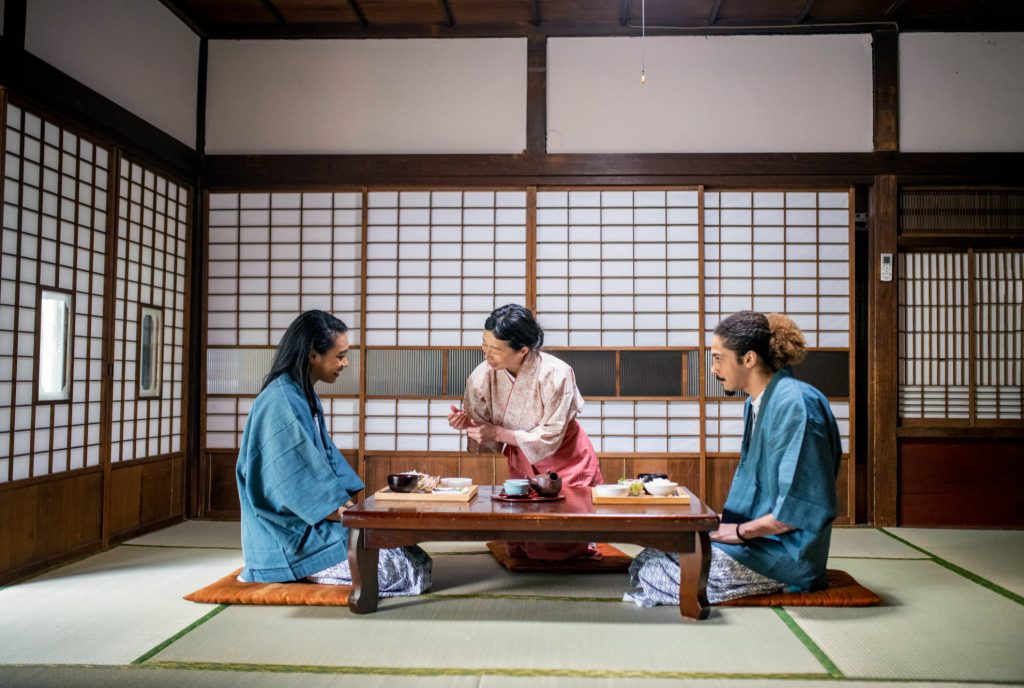
If you’re on this website, then you’re already on the right track. Ryokans are not like typical hotels where you can just barge in without any prior preparation. Staying at a ryokan requires just a little bit of homework on all of the different customs and etiquette you should be familiar with.
We promise that it’s a lot less intimidating than it seems. Staff would definitely understand if you’re unfamiliar with their practices especially if you are a foreigner, but they would also greatly appreciate it if you came prepared!
2. Be punctual
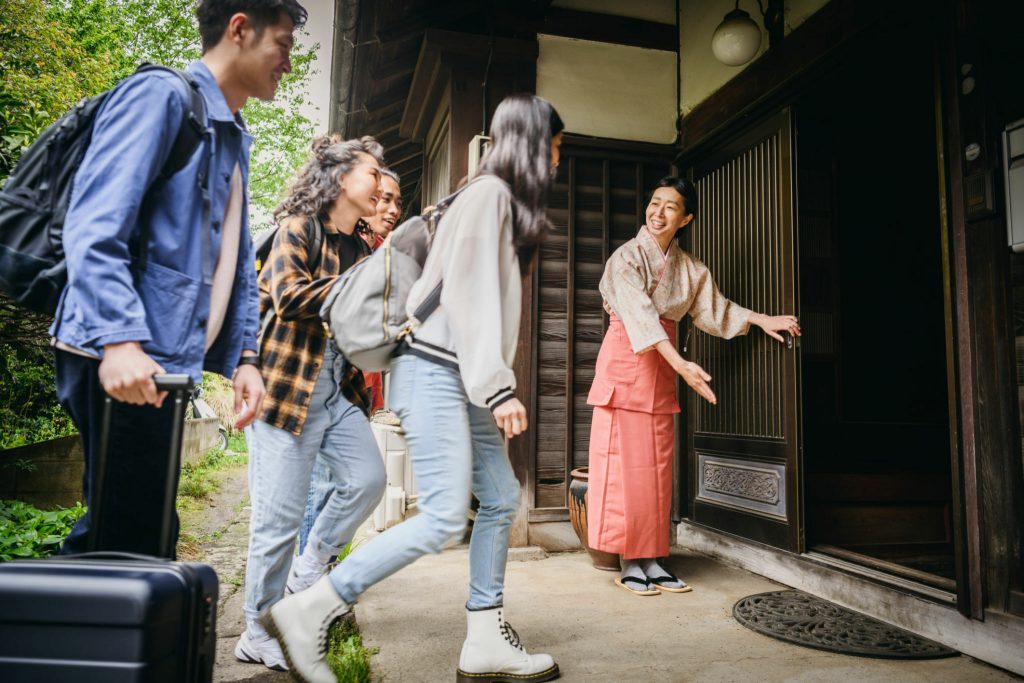
Take this as the golden rule. Japanese people value punctuality a lot. It is considered very rude if you are late to an agreed-upon time. Once your check-in time and date are set, try your best to come on time if possible. If not, then be sure to inform the staff in advance. That’s just good manners!
3. Know when to take your shoes off
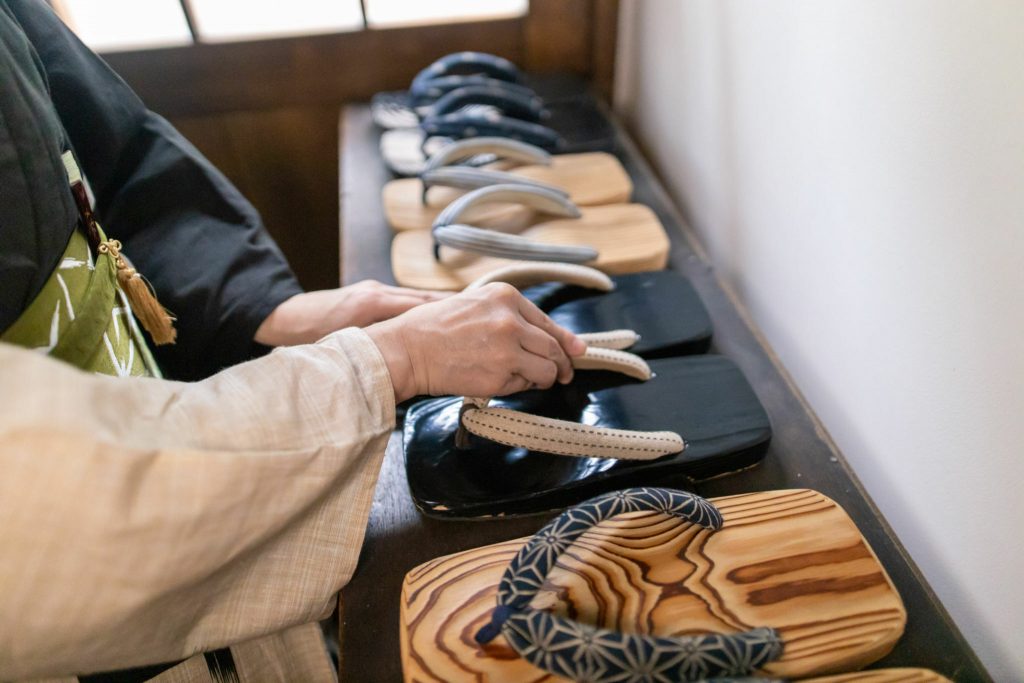
This is where many foreigners find it a bit tricky — especially if they come from a culture that does not take off shoes indoors. These are the basic rules. If you notice that the entrance of your ryokan is on a raised floor, then this means you would have to remove your shoes before stepping up. Place your shoes neatly by the entrance, with the toes facing towards the door. Most ryokans would then provide you with indoor footwear that you can wear inside the ryokan.
4. Know when to put on shoes
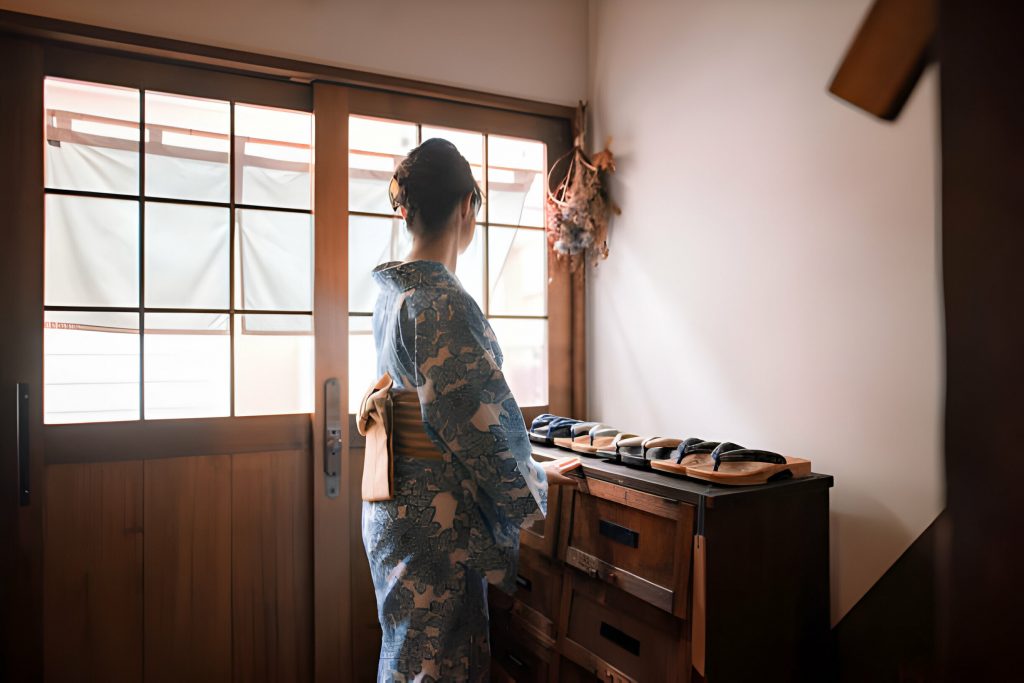
Similar to the previous point, ryokans — and Japanese rooms in general — have certain rules regarding footwear. It’s important to know when to take your shoes off, but it’s equally important to know when to put them back on. In ryokans, certain footwear is for indoors only while some is for outdoors only. It would be bad manners to step outside in your indoor footwear and vice versa.
5. Familiarize yourself with tatami
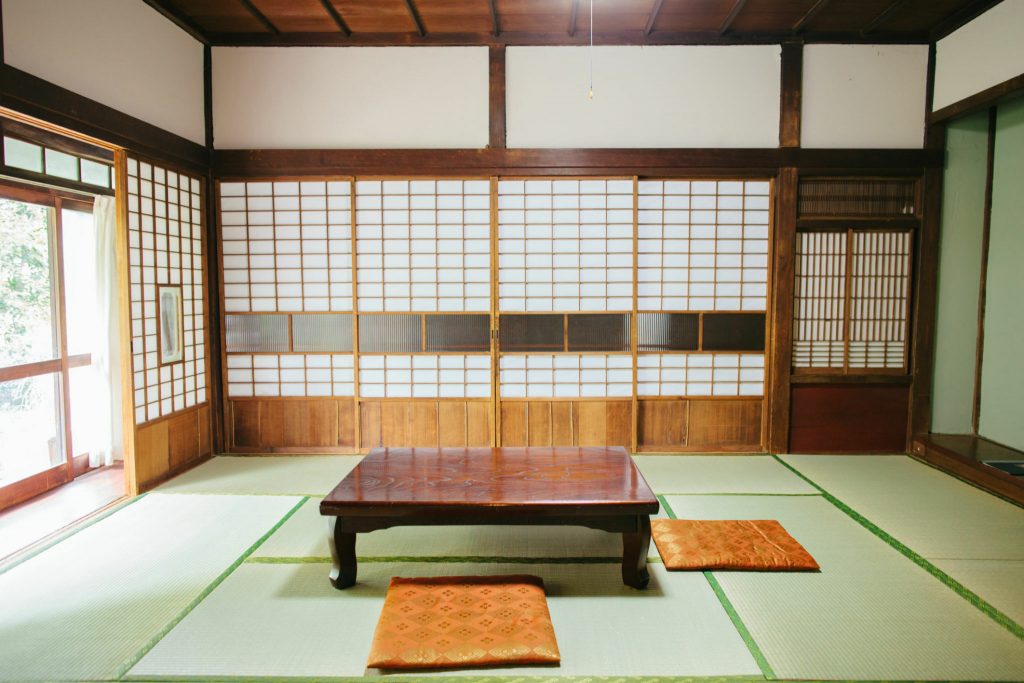
If you’re staying at a ryokan to experience some traditional Japanese architecture, then you should definitely acquaint yourself with tatami. Tatami is a kind of material made from compressed rice straw and grass. It’s often used as mats to be spread out across the floor, or even as part of the floor itself. Before stepping into a room with tatami, make sure to remove your shoes. Only bare feet or socks are allowed to be worn when on the tatami.
6. Do not drag your suitcase
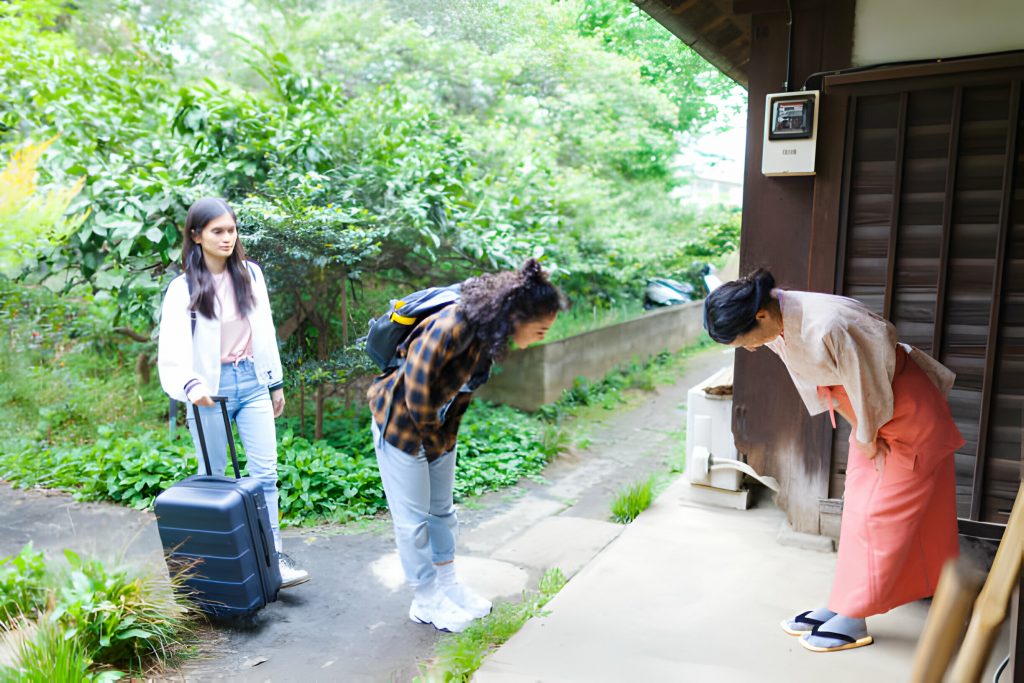
Speaking of tatami floors, many ryokans have entire rooms that only use tatami when it comes to their flooring. While these floors are sturdier than you think, they are also prone to scratches — especially by luggage wheels. As you step inside the ryokan, it would be good to carry your suitcase instead of dragging it on the floor so that you won’t make any unnecessary marks. If you need help carrying your belongings, you can always ask the staff!
7. Use separate footwear for restrooms
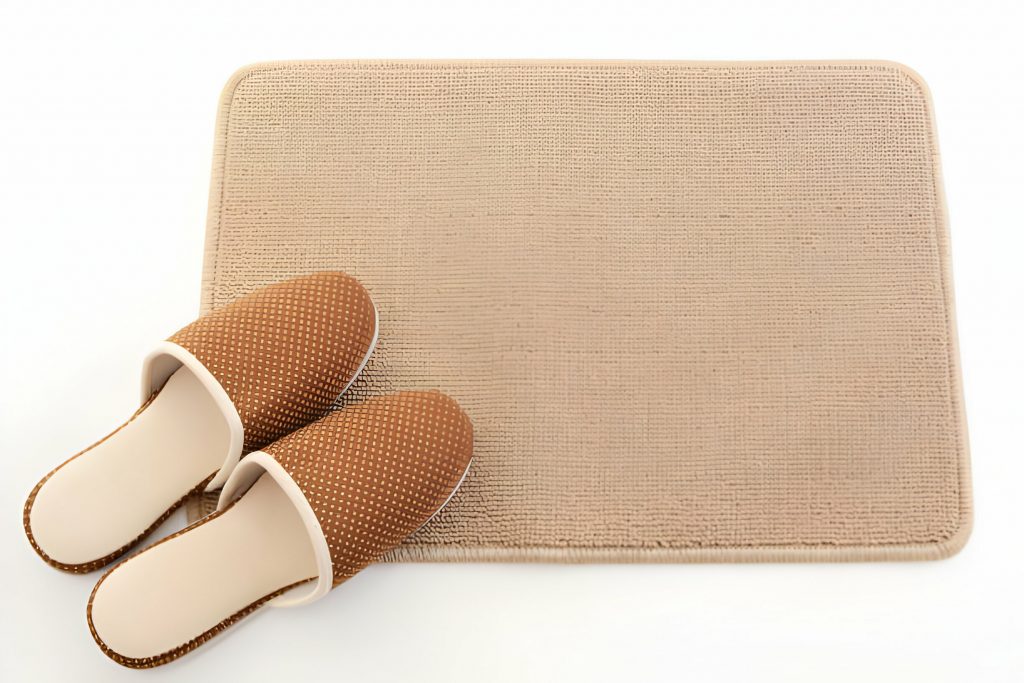
Back to our rules about footwear. In relation to different kinds of footwear being appropriate for different rooms, Japanese restrooms also have their own etiquette you must follow, especially in a ryokan. Most ryokans would provide their patrons with separate slippers that are specifically designed to be worn inside the restrooms. These are typically found near the restroom entrance for your convenience.
8. Be gentle with the interior
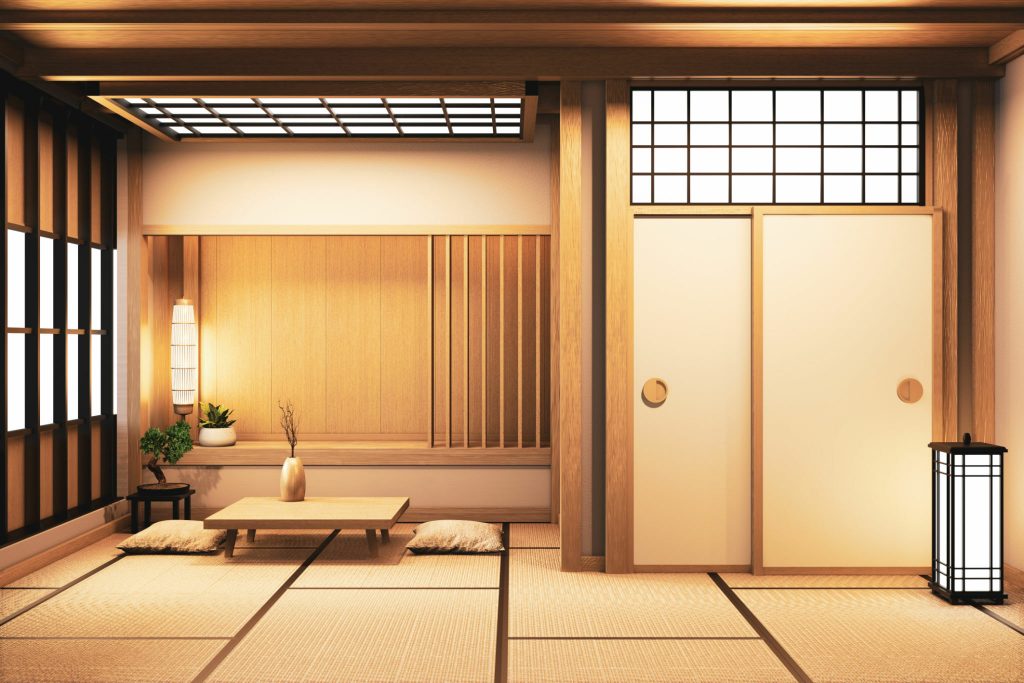
One of the most eye-catching things about a ryokan is definitely its use of traditional Japanese architecture — even on its interior! That being said, because ryokans often use natural materials, interior pieces such as doors, windows, and wallpapers are probably a bit more fragile than you’re used to.
Traditionally, Japanese-style rooms use a special kind of paper for their screens (shoji), sliding doors (fusuma), lighting shades, and so on. Remember to use these items as gently as you can! After all, you wouldn’t want to cause a scene and accidentally destroy the furnishing, right?
9. Get to know your futon
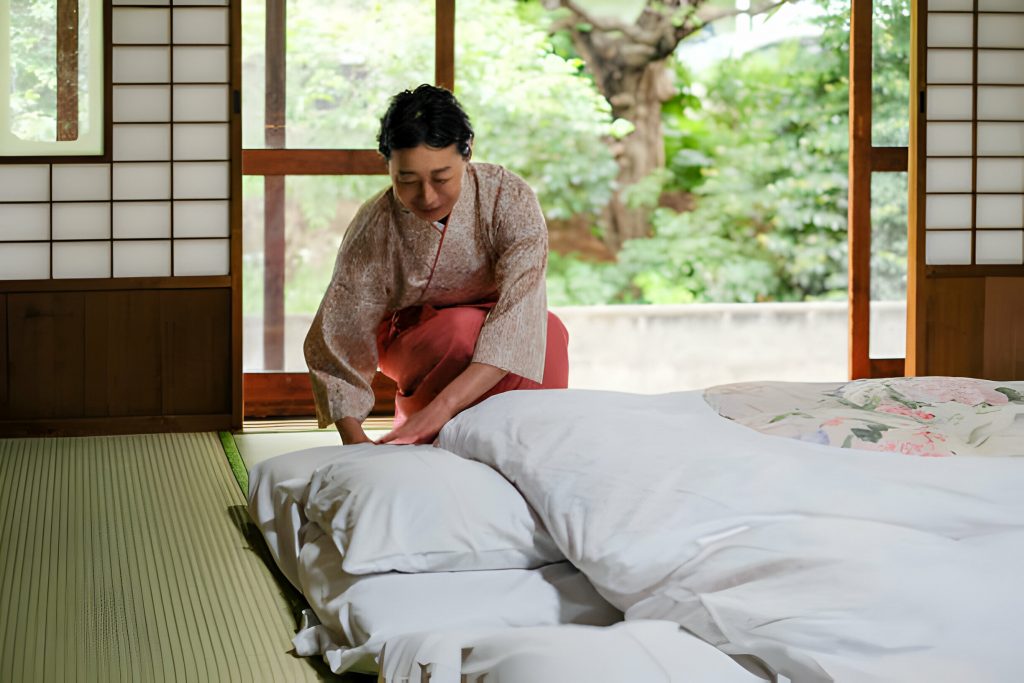
Another part of the ryokan experience is getting to sleep on a futon! A futon set consists of a mattress and a thick duvet. When you first arrive at a ryokan room, you will usually see that there are no beds at all. Don’t worry — this only means that the futons are stored away in the closet. In the morning after you have slept on your futon, you can easily fold it and store it away. You can also ask the ryokan staff to store your futon away for you.
10. Wear yukata
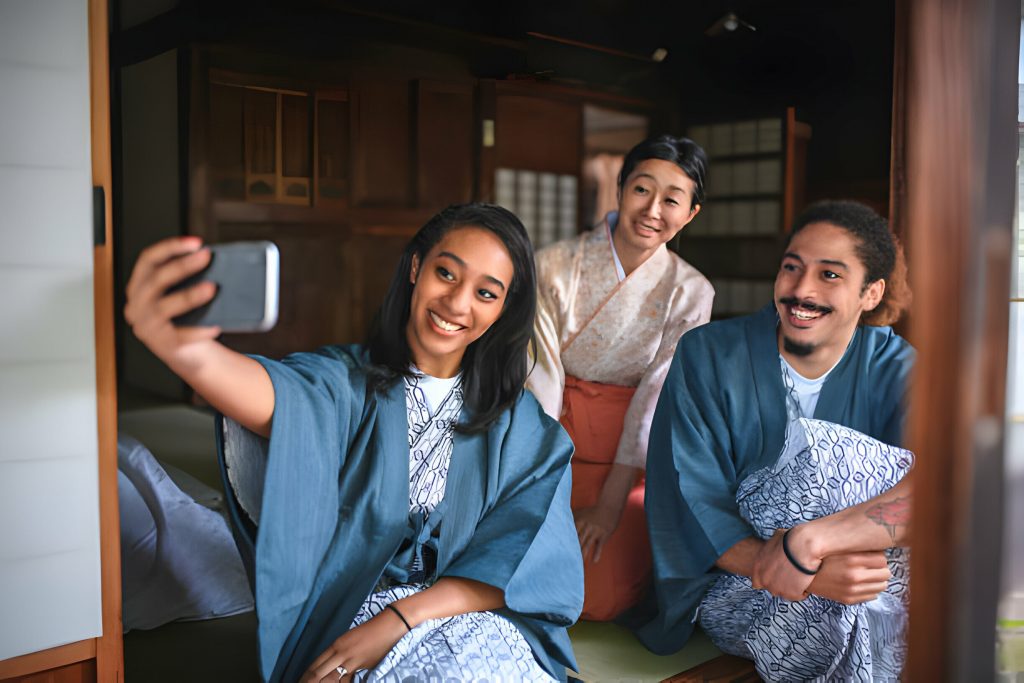
Who doesn’t like dressing up? In ryokans, the world is your runway. Most ryokans provide their guests with yukatas to wear during their stay. A yukata is basically a summer-style kimono that is more casual, breathable, and comfortable. Back in ancient times, yukatas were only used in bathhouses, so it’s really fitting that ryokans today still encourage guests to wear yukatas. The best part?
Now you can wear it in so many different ways — you can wear it while lounging around the ryokan, or you could even wear it out and about on the streets!
11. Know the yukata rules
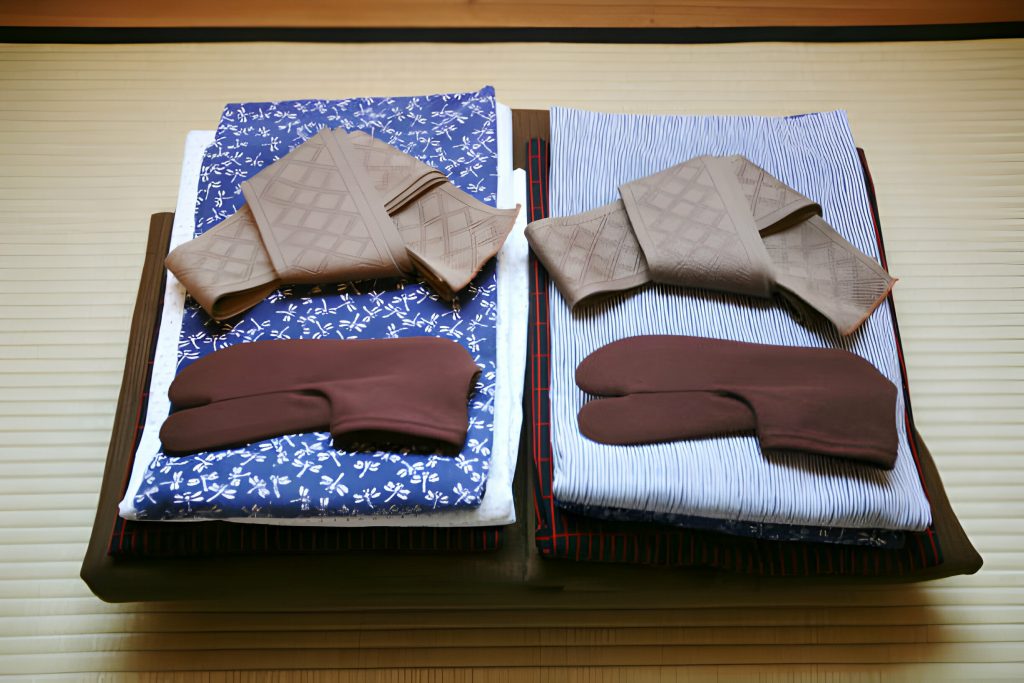
Of course, with a piece of clothing that has this much history, there are certain rules and do’s and don’ts you have to remember when wearing a yukata, especially if it’s your first time. Like we have mentioned, yukatas can function as both loungewear and day-out wear.
If you’re planning to visit during the cooler months of autumn and spring, then most ryokans would also provide you with an outer robe (chabori) to keep you warm as you wear your yukata. The only rule of yukata is to have the left collar over the right when you wear it. When in doubt, you can always ask the staff for help!
12. Experience the onsen
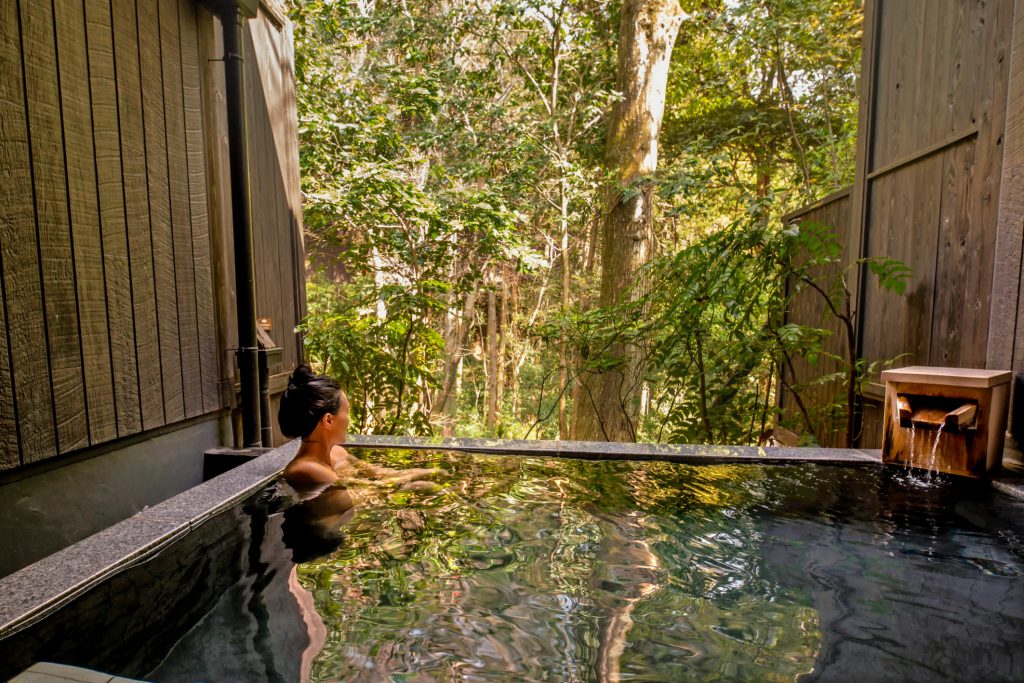
Most ryokans feature a hot spring or onsen on their premises. It’s definitely one of the highlights of every ryokan stay, so we implore you to not miss out as well! Onsens will help you relax, ease your worries, and simply unwind. There’s no better way to rejuvenate than at a natural hot spring while staring at a gorgeous view.
Aside from that, onsens are also known to provide physical comfort — muscle relaxation, smoother skin, healthier joints — you name it! Onsens are definitely a great way to keep your body healthy while also putting your mind at ease.
To get familiar with the rules related to onsen, we highly recommend you to check out our article about Onsen Etiquette! If you have tattoos, you can also read our selection of 10 tattoo friendly ryokans in Japan.
13. Arrive on time for meals
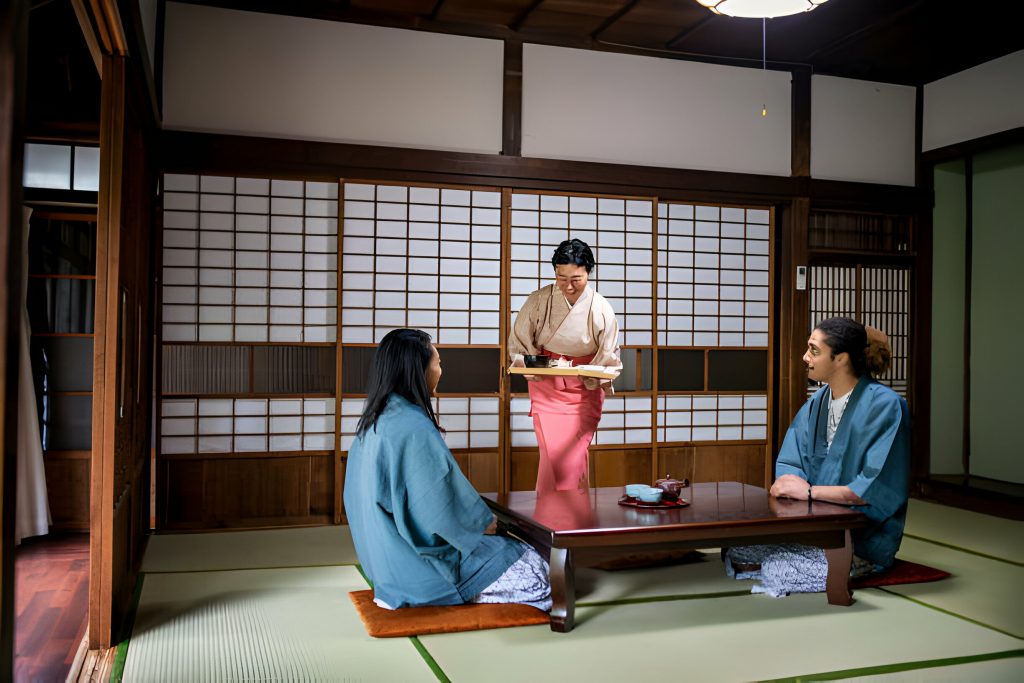
One of the best things about staying at a ryokan is they will often serve you incredible dishes you’ll hardly be able to try anywhere else. Each meal is prepared fresh and in-house by talented chefs, so we advise you to arrive on time. After all, all of the chefs and staff would want you to try out their dishes as fresh as possible to give you the best experience. If you really can’t make it in time, then inform the staff beforehand.
14. Try traditional meals
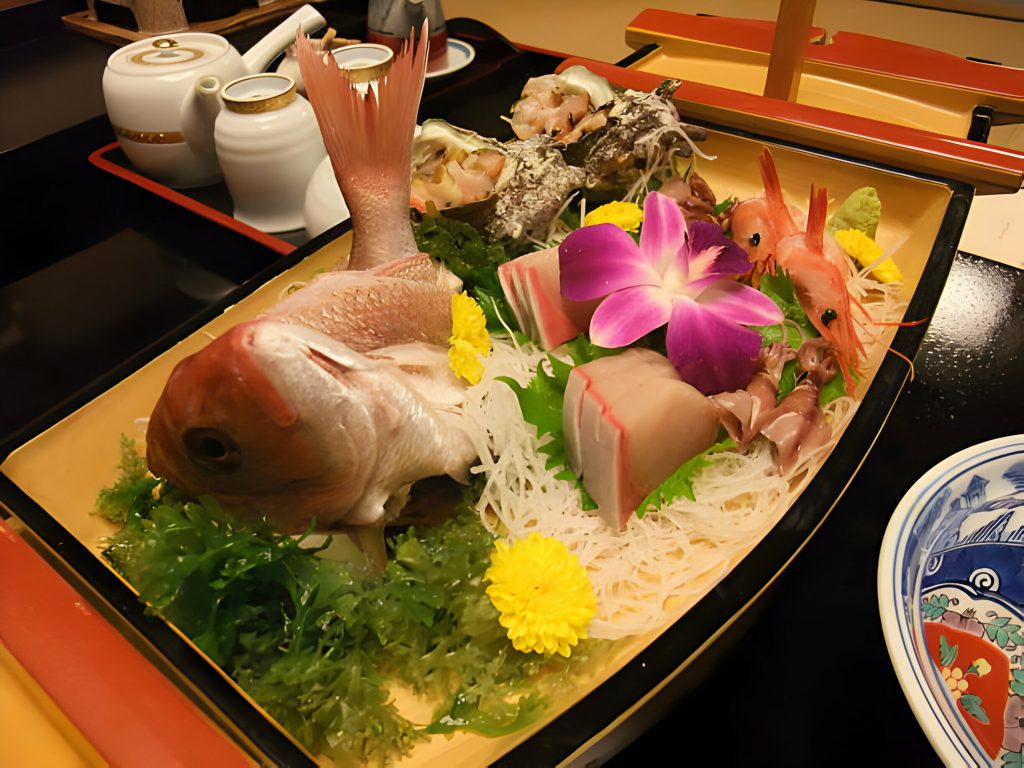
Like we have mentioned, ryokans serve incredible authentic Japanese meals. Not only are these meals super tasty — they’re a feast for the eyes as well! Many of these meals may include ingredients you’re not familiar with or styles of cooking you’ve never tried before.
Nevertheless, we really encourage you to give each dish a try. After all, you’ve come all this way! It would be quite insulting if you flat-out refuse to try the dishes the amazing chefs have so painstakingly prepared for you. And trust us, a ryokan meal is quite an unforgettable experience!
15. Check out on time
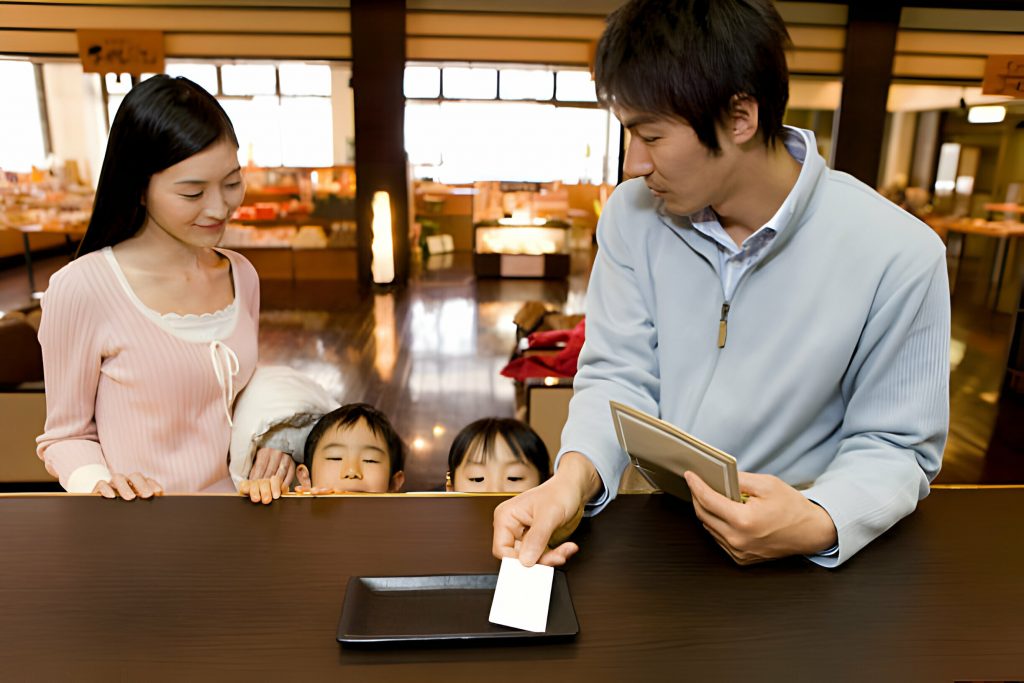
Even as your incredible ryokan stay comes to an end, you still have to remain punctual as long as you’re inside the premises. Make sure to check out at the agreed-upon time. Some people may find Japanese people’s punctuality and timeliness a bit too much, but we think it’s all just a matter of respecting each other’s time. Like how Japanese staff in the hospitality industry would always provide you with the best service, it’s only good to repay it by not wasting their time.
16. Prepare cash
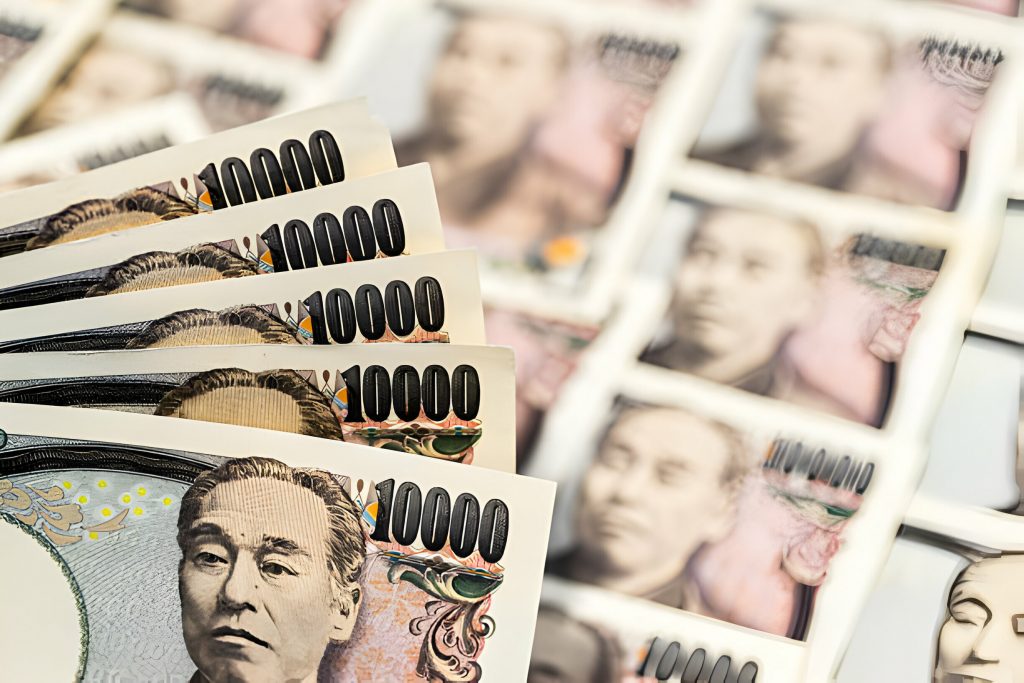
Just in case, we advise you to have some Yen on you. While many ryokans do accept credit, debit, and other forms of payment, especially those few ones located in major cities, some ryokans still go on a cash-only basis. To be sure, it would be good to exchange some cash before staying at a ryokan.
You May Also Like: How Much Is A Ryokan In Japan
17. Do not tip
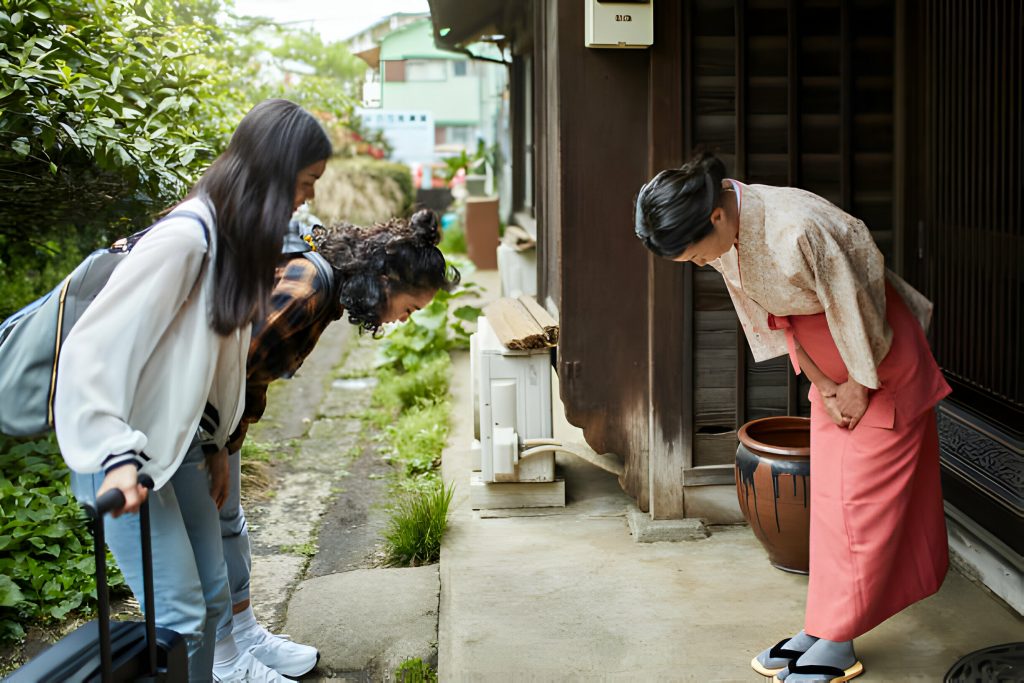
While you may be tempted to tip the staff for their exceptional service, there is no need to. In fact, the entire “tipping culture” doesn’t really exist in Japan. Workers in all kinds of industries don’t really expect you to tip no matter how good of a service they provide.
Some guidebooks also say that it is required to tip in ryokans, but take it from us. Tipping is absolutely unnecessary. If you really do feel the need to tip, the best way to go about it is to put it in an envelope and hand it to the staff member with both hands.
—
We hope you enjoyed our article about ryokan etiquette! Which tip surprised you the most? Let’s start a conversation in the comments!
For first-timers, we understand how it can feel a bit intimidating to stay at such a place like a ryokan. After all, ryokans are sought-after for providing the full traditional Japanese experience to their patrons. Not to worry — there are just a few tips and tricks you need to know before you can pretty much pass as a local! Let this be a learning experience for you. After all, one of the best parts about traveling is getting to know different kinds of customs and cultures!
To better understand Japanese traditional inns, you can also read our post about what is a Ryokan.

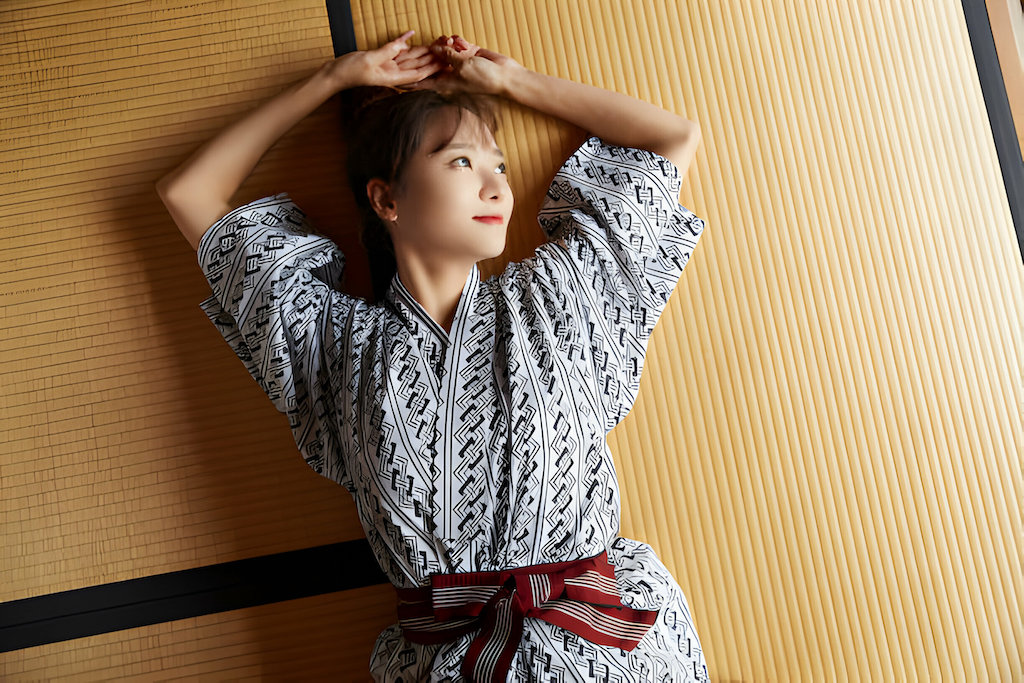
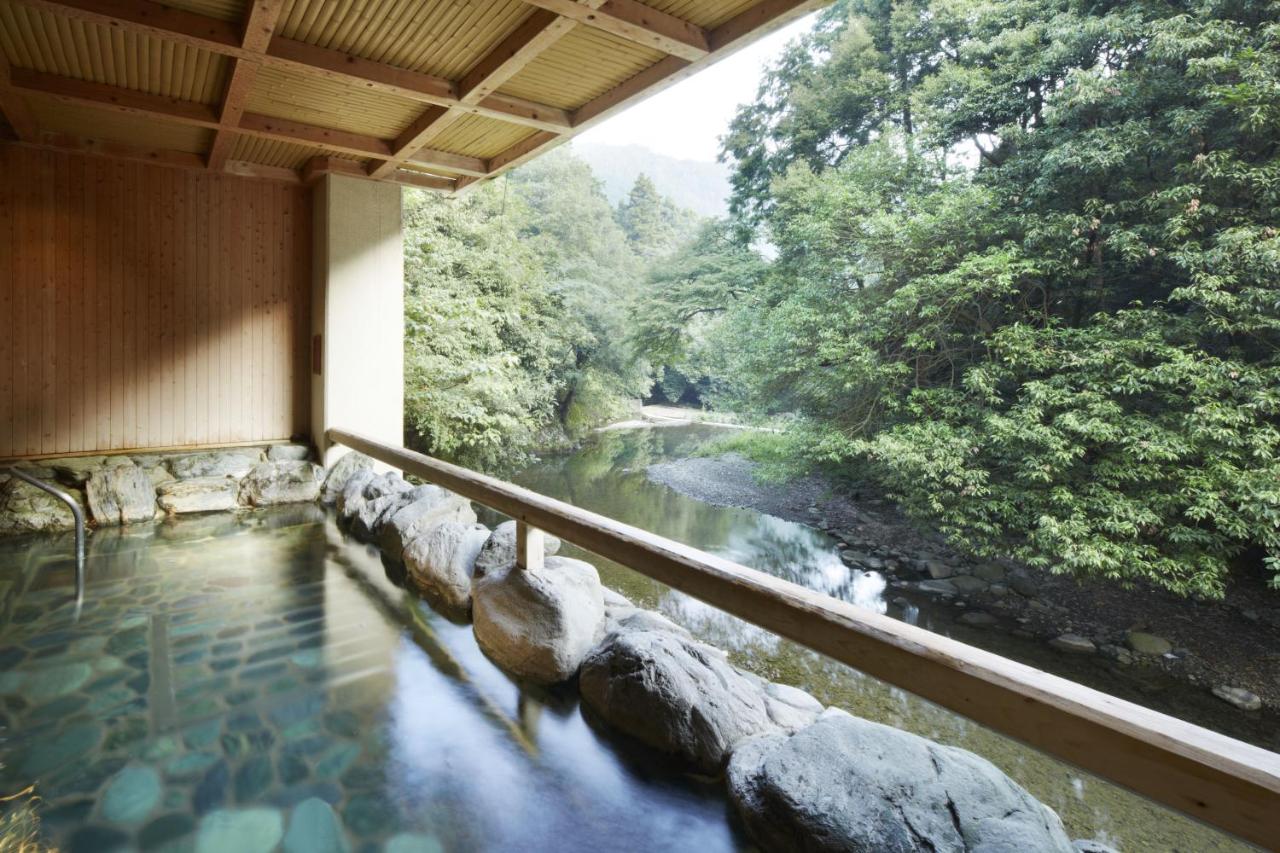
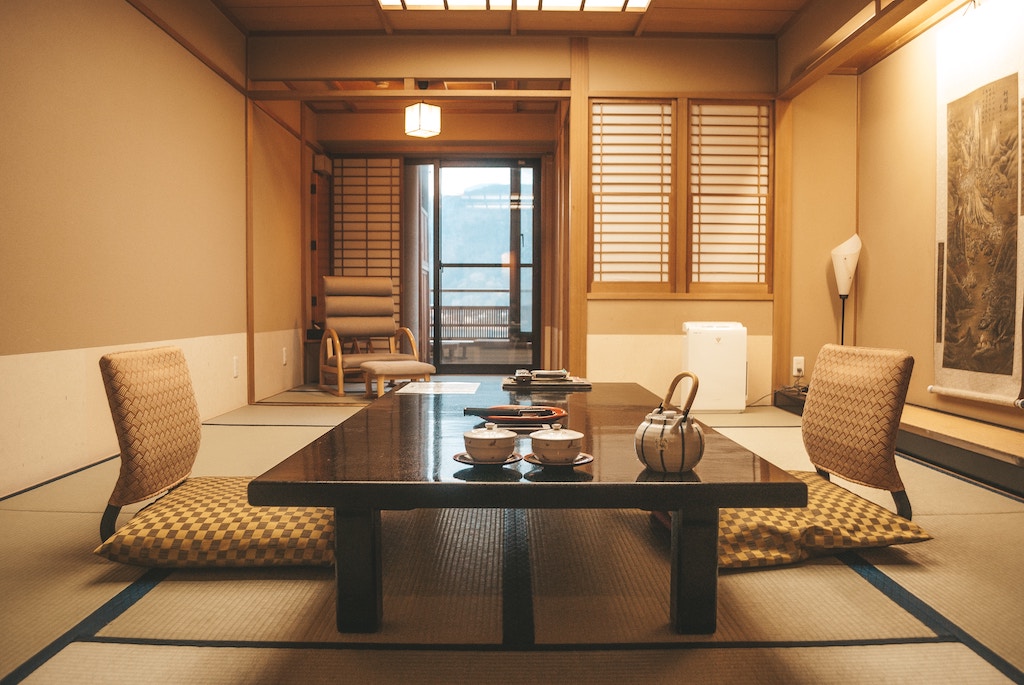

5 Comments